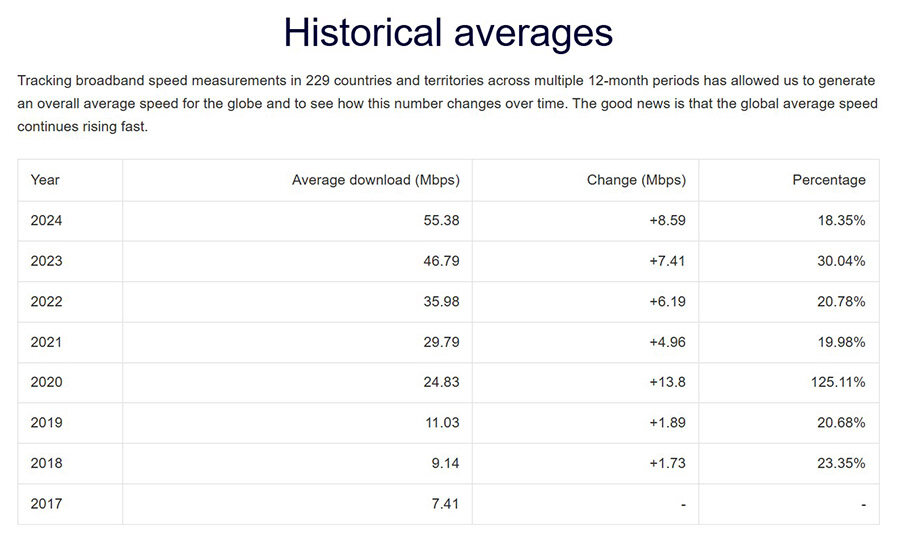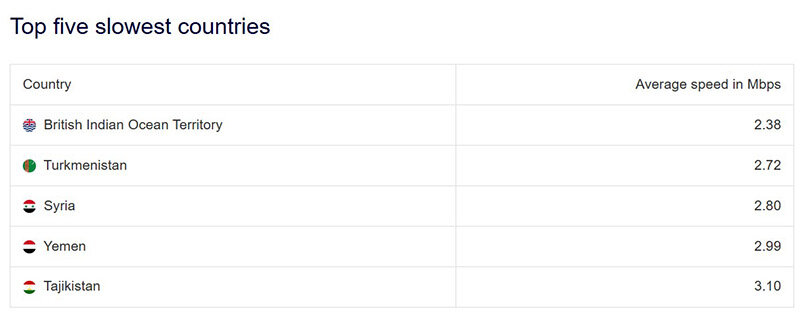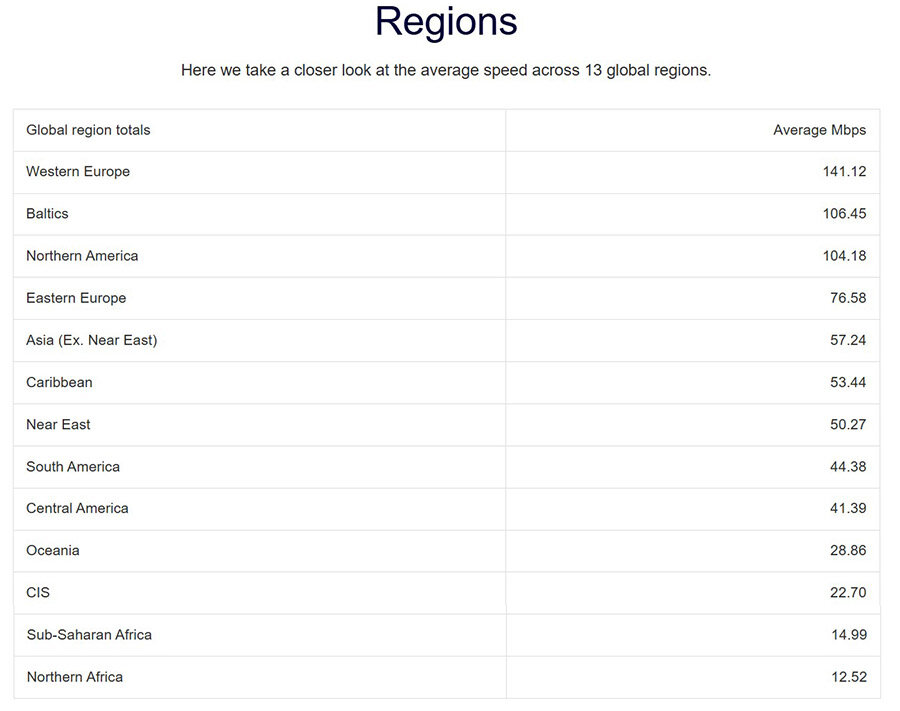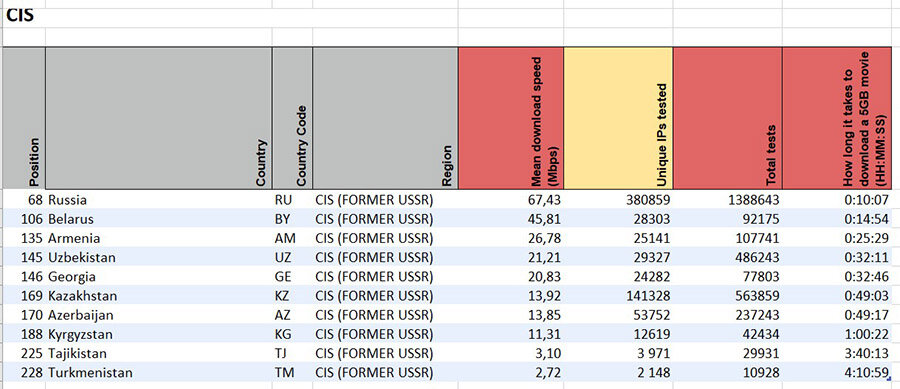читайте также
 Trump Tower to Be Built in Belgrade as Authorities Prioritize the Controversial Project
Trump Tower to Be Built in Belgrade as Authorities Prioritize the Controversial Project
 Rental rates for housing in Warsaw have reached a record level
Rental rates for housing in Warsaw have reached a record level
 Where the Wealthy Live Comfortably: The Latest Ranking of Cities and Countries
Where the Wealthy Live Comfortably: The Latest Ranking of Cities and Countries
 Emergency landings in Portugal: rising incidents raise questions about flight safety
Emergency landings in Portugal: rising incidents raise questions about flight safety
 Prime London Property Prices Fall 3.2%
Prime London Property Prices Fall 3.2%
 How EU countries issue Schengen visas to Russians after the new restrictions
How EU countries issue Schengen visas to Russians after the new restrictions
Broadband Speed League 2024: Global Internet Speeds, Digital Leaders and Laggards

As the world becomes more digitized and reliant on remote services, access to high-speed internet is becoming a critical indicator of economic and social progress. The Worldwide Broadband Speed League 2024 highlights which countries lead in internet performance — and which still lag behind.
Over 1.5 billion speed tests were conducted in 229 countries in the 12 months ending June 30, 2024. The global average download speed reached 55.58 Mbps, marking steady growth compared to previous years.

Digital Champions: Iceland, Jersey, Macau
Iceland topped the ranking with an average speed of 279.55 Mbps, thanks to government-led digital transformation and telecom infrastructure covering even remote areas.
Jersey came second with 273.51 Mbps, becoming the first region in the world with full FTTP (fiber to the premises) coverage. Local provider Jersey Telecom offers up to 944 Mbps, positioning the island as a global telecom leader.
Macau retained third place at 234.74 Mbps, reflecting the maturity and consistency of its digital infrastructure.
Other top performers include Liechtenstein, Denmark, Andorra, the Netherlands, France, and Monaco — all investing heavily in smart city tech and connectivity.
Solid Speeds in Developed Nations
South Korea, the USA, Switzerland, Sweden, Israel, Canada, Spain, and Slovakia ranked within the top 20. Their consistent investment in fiber and next-gen networks has paid off in both speed and resilience.

The Global Laggards
At the bottom of the list were:
British Indian Ocean Territory – 2.38 Mbps
Turkmenistan – 2.72 Mbps
Syria – 2.80 Mbps
Yemen – 2.99 Mbps
Tajikistan – 3.10 Mbps
These countries often face structural digital challenges, lack of investment, and in some cases, post-conflict recovery or international isolation.

Regional Trends & Disparities
Western Europe leads with a 141.12 Mbps average.
Baltic States (106.45 Mbps) and North America (104.18 Mbps) follow.
Asia (excluding the Middle East): 57.24 Mbps.
Macau, South Korea (172.53 Mbps), and Japan (139.53 Mbps) lead.
Indonesia, the Philippines, and India face rural connectivity challenges.
Africa remains the slowest continent — North Africa averaged just 12.52 Mbps.

CIS: Mixed Progress
The CIS region averaged 22.70 Mbps:
Russia: 67.43 Mbps (rank 68)
Belarus: 45.81 Mbps (rank 106)
Armenia: 26.78 Mbps (rank 135)
Georgia: 20.83 Mbps (rank 146)
In contrast, Turkmenistan, Tajikistan, and Kyrgyzstan lagged far behind.

Why Speed Matters
From remote work to digital governance, speed = efficiency:
Downloading a 5GB movie in Iceland: ~2 min 26 sec
In Tajikistan: ~5 hours 30 minutes
Fast internet is a basic utility in the digital age — essential for education, productivity, innovation, and attracting investment.





